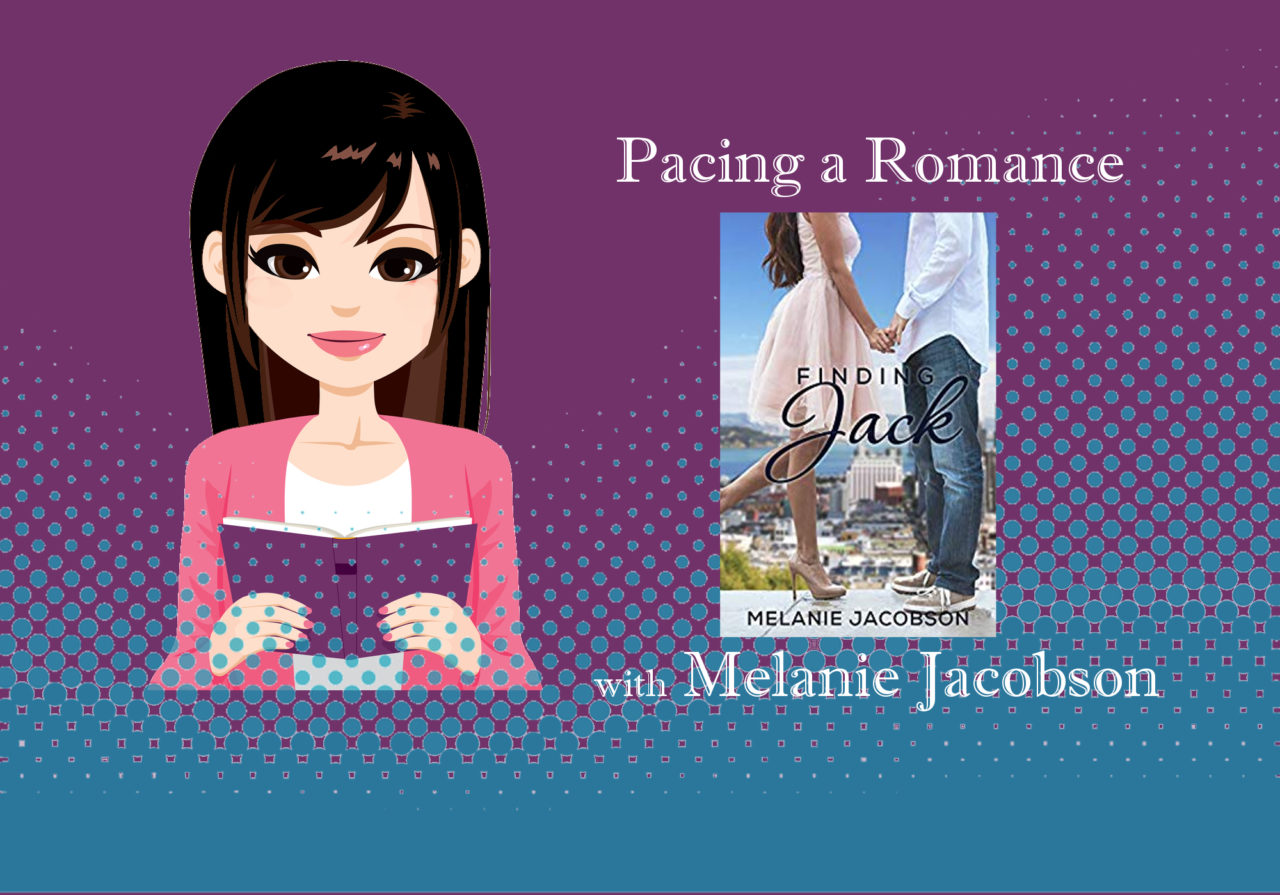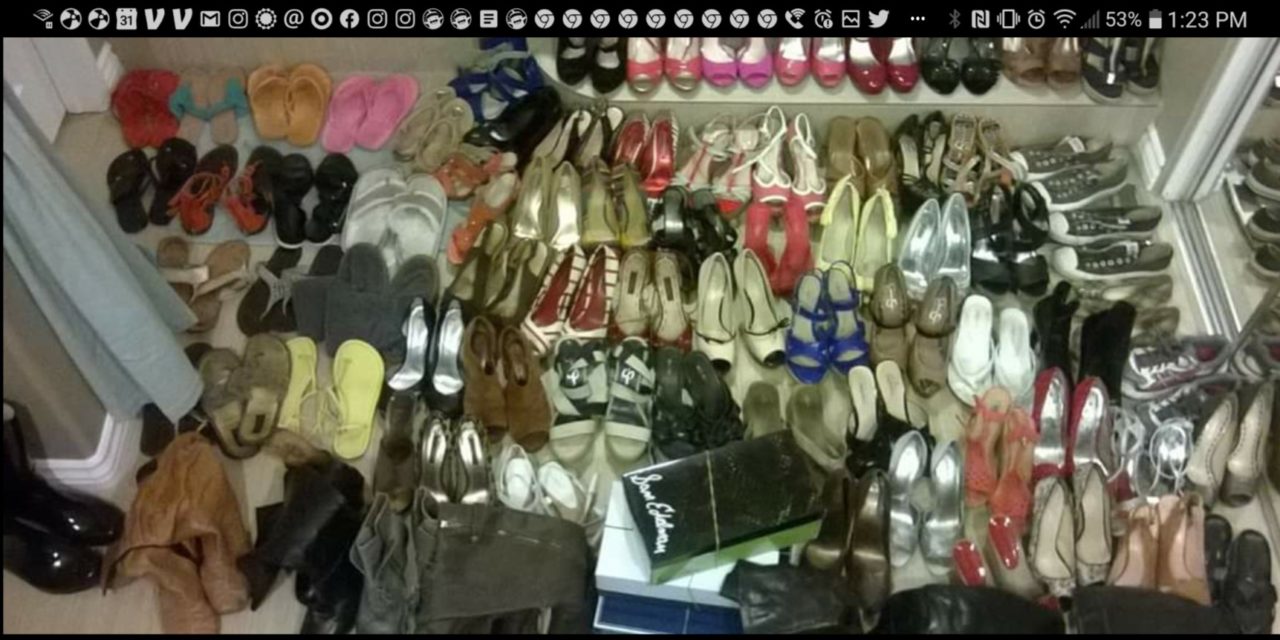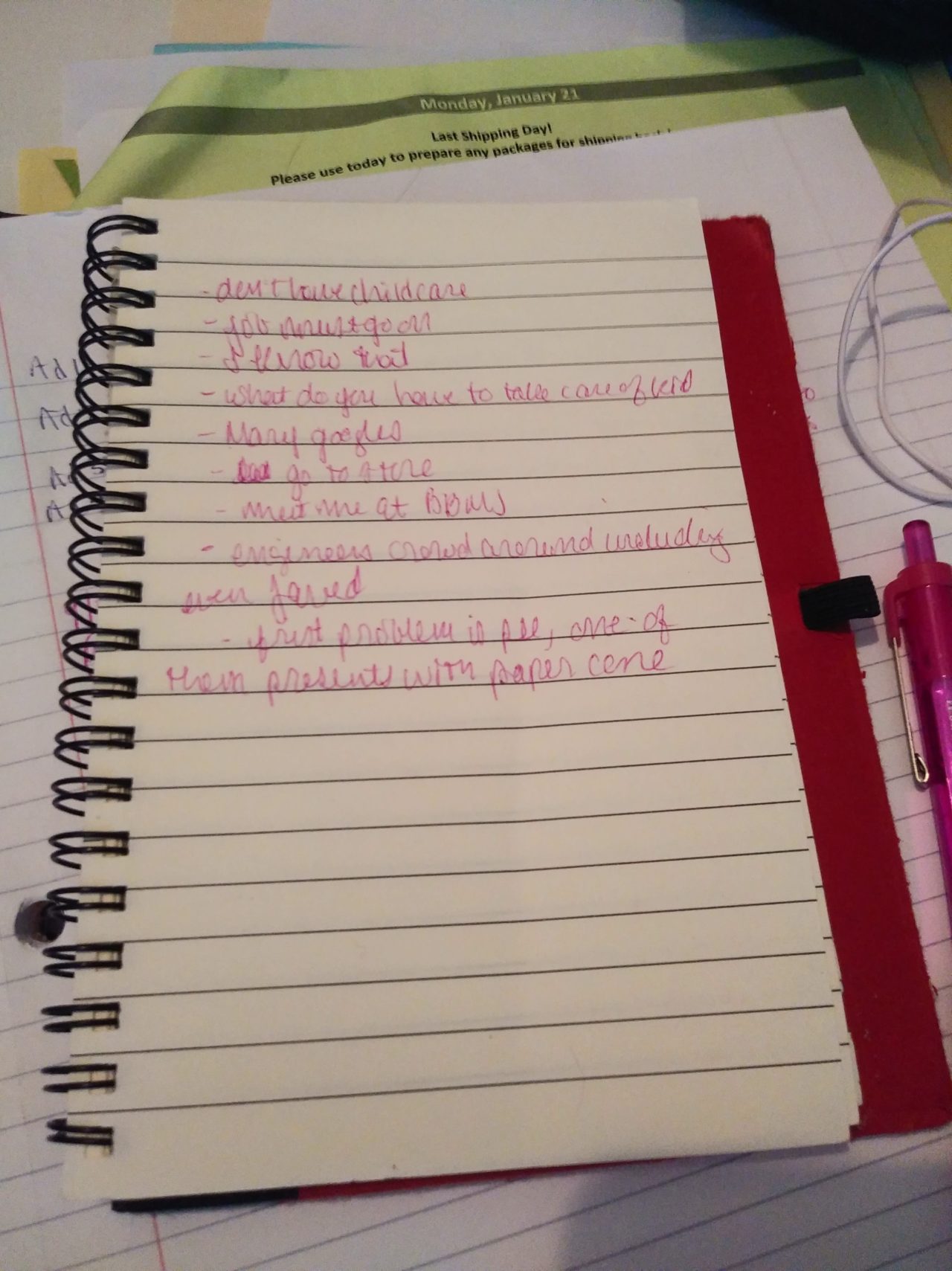
Melanie Jacobson is the author of romantic comedies who also collaborates under the pen name Brenna Jacobs. She will chat about how she earned a shoe award at a writer’s conference, how to pace a romance, and how to write a great kissing scene.
Q. I understand you are slightly sleep-deprived, coming from a conference recently.
A. Yeah. Finally got a good night’s sleep last night, but whew.
Q. Which conference was that again? And what topic did you present on?
A. ANWA (American Night Writers Association). I did a keynote on our divine nature to create, a class on pacing romance, and a class on voice.
Q. Nice! I will just get out of the way, if you could please do a monologue on those three topics. LOL But before that, I need to ask you about your award. Something to do with shoes?
A. The one Michelle made me?
Q. Yes. Could you please explain to those of us who are also shoe-obsessed, but haven’t quite earned an award towards it.
A. Hahaha, okay. I’m sort of a known shoe-holic. I have been for years. I love them and buy way more than I should, and they’re mostly totally impractical shoes. But they make me happy. I buy a pair to celebrate finishing a book, another for getting a contract, another when the book comes out, another when I get my first royalty check. So that’s four pairs of shoes for one book, and that doesn’t even count the shoes I buy in-between just for no reason. I think where I really sealed my reputation was when I decided to organize my shoe closet, so I pulled all the pairs out to sort them and took a picture. Even I was startled by the volume. But I was without question guilty based on evidence: I have a shoe hoarding problem.
Q. Wow, yeah, that is a whole slew of shoes. Are we talking high-heeled shoes or different ones? I would love to see that pic.
A. ALL sorts, but since most writers know me from conferences, I’m usually best known for my high heels. But I’ve got three pairs of Converse, lots of sandals and flip-flops, and on and on. I’ll look for the picture.
Q. I remember–and it’s been a few years now–when we first met. I think I was at Storymakers and we were at an intensive, going over our manuscripts. Or maybe you were a mentor at that table. At any rate, I was struck with how strong your voice was then as a writer. How long have you been writing, and how long has it been since you have been published? How many books now?
A. I started writing after my second child was born, so since 2007, I guess. My first book was accepted for publication in 2009, and I debuted in 2011. I have 10 books out, lots of novellas, and another one under a pen name project.
Q. Can you tell me what the pen name is, or is it hush hush?
A. Not hush-hush. It’s a collaborative pen name that I write with friends: Brenna Jacobs.
Q. Brenna has a photo on Amazon. Is she a stock photo, or the photo of one of your authors? And how did she come about?
A. Hahaha, the Brenna picture is the number one thing we get asked about. There’s a site called thispersondoesnotexist.com. You just refresh it over and over and it gives you a new picture of a non-existent person each time. They’re generated from composites that the app creates from public photos. I picked about 8 that looked like Brenna feels, and we decided that one was what all of our personalities look like when you put us together. It doesn’t really make sense, but it also makes perfect sense if you know us.
Q. Whew, glad I am not the only inquisitive one. That is amazing. How cool is that? Would it be crazy though if a version of her came walking up to you one day? Anyway. That is my writer’s imagination running away with me.
A. Hold on, found the insane shoe picture.

Q. Ha ha, that looks like a shoe store! You were not kidding. Do you get outfits to match??
A. Nope. If I like the shoe, I don’t care if it matches anything. I just buy them.
Q. Sounds like a good shoe-buying philosophy. Sometimes I swear, we ladies overthink it. Does your husband have to put his clothes in the garage somewhere?
A. My husband’s clothes actually fit in our closet, which is a small walk-in, not the size of a horse stable. Surprising, I know.
Q. Back to the pen name collab…how did Brenna come about?
A. Okay, the collab pen name. Let’s see . . . it’s a longish story with lots of pieces. Some of my closest friends and I are all published writers. We’d always thought it would be fun to do a project together, but since one of us is with a different publisher, we decided to do it as an indie project rather than fight with our publishers. The project was really fun. While we were in the midsts of it, I had this idea for a story about a woman who’s looking for Mr. Right, but without any idea of where to start, she decides to just date alphabetically by career .Then I thought, “That would be a fun idea for a series, where each book is a woman dating someone in a different career.”
I mentioned it to one of my friends, and she was like, “That’s a cute idea, but are you going to want to write 26 books on that?” And I definitely did not. So we thought, “Why not just have the group of us tackle it, each taking one book?” We already knew from the project we were in that our styles meshed really well, so we started the series. It’s been fun so far. In fact, I took a break from drafting “E” to do this interview.
Q. Ah, yes, I saw that you were sprinting 5k today. The ABC series is such a cute idea. How long are each one in that series? How many words?
A. They’re right around 50K words each.
Q. How much research have you had to do with each career? The first one, being Author, probably did not take too much research?
A. No, that one was easy. It surprised me though, because I polled readers on what “A” should be and offered up Author, Actor, or Architect as choices. I thought they’d want Actor, but nope, they were pretty definite about Author. I was also surprised that I sat down to write a light, fluffy romance and it turned out I HAD THINGS TO SAY. So that was funny.
Q. Those characters sure can surprise us. Which authors are involved in the ABC Series, and how have you managed to stay friends through the collaboration?
A. I’ll leave it to them to decide if they want to reveal themselves or not, but here are four of us. We’ve stayed friends because we were already very tight friends to begin with. But also, we laid some ground rules. We set this up officially from day one, with official job titles and responsibilities and quarterly conference calls, etc. The most important ground rule is that the friendship comes first, and that all profits are split equally no matter who wrote what book, so that we all benefit from doing our assigned part of this business side of things. I will say it wouldn’t be hard at all to figure out who my collaborators are: just look at my most recently published collaborative project.
Q. Wow, that is great. Ha ha, yeah, I am sure someone can sleuth it out eventually. Let’s dial back a bit and talk about Finding Jack. I sensed, when you first came out with it, that it was sort of a watershed book for you. Was it your first indie book, and tell me what is similar about it and what sets it apart from your other books.
A. It was a watershed in a few ways, I guess. It was my first indie book where I was entirely responsible for everything: finding cover design, editing, formatting, and doing the marketing.
As for what set it apart . . . I write clean but I work for a very conservative publisher. A small but vocal minority of those readers have some pretty strict ideas about what they do or don’t want to see in a book, like for example, they don’t ever want people of the opposite sex in each other’s bedrooms even when nothing is going on. And it was nice to be able to step outside of those constraints, because as much as I understand and respect them, it’s not necessarily how real people live. So even something like having a scene where one character is another’s bedroom EVEN THOUGH NOTHING HAPPENS OR IS EVEN ABOUT TO HAPPEN was like having some room to move and flex. It’s still a completely clean book, but I didn’t have to have my characters conform as strictly to rules that made no sense in their world.
The biggest difference was that I wrote this book completely for fun. I did a chapter a week on my author Facebook page as a break from some of the heavy stuff and the deadlines I had. I was just playing with no intention of publishing it until readers asked for it. There was something about writing this book purely for the fun of it that really unlocked my creative process and I got as swept up in the story as anyone else. I rarely have that experience as a writer, but I think you can feel how fleshed out this story feels when you’re reading it, and I think that’s why. I took my time, wrote what I felt like, and made the story I most wanted to read.
Q. That is fantastic. I think you (or someone) also said that it had one of those amazing kissing scenes. How have you managed to write romances and keep kissing scenes fresh and non-repetitive?
A. True confession: I hate writing kissing scenes. I feel so dumb when I do. And yet, readers always comment on how much they love them. I think for me, it’s because the fun is in the slow build of chemistry. I like seeding in all those moments leading up to it, deepening the characters’ attraction at the same time I’m deepening their emotional connection. So then, I always think about my favorite movie kisses and try to create that specific moment on the page, but I think the reason it really works is because of how I try to build toward it.
Q. Ha, that slow build. What are some things that can help a romance slow build? What are specific ways an author could deepen the attraction and emotional connection?
A. Uh . . . well, let’s see if I can sum up the class I taught on this:
1.Physical interactions need to build in an order that makes sense.
2. They should mirror but always follow an emotional interaction.
3. Both the physical and emotional interactions should be deepening the connection each time.
For example, take an enemies to lovers trope: Initial interactions will be tense and adversarial. At some point, your heroine needs to see an unexpected flash of a personality trait in the hero. Tenderness (not toward her but toward someone/something more vulnerable than him, i.e. a puppy or child) or humor (he cracks a joke or she even catches him smiling) when the heroine doesn’t expect it. Now you’ve set up a tentative emotional connection.
This should be followed shortly, within the next scene or two, by an equivalent physical interaction, that mirrors that heightened awareness, like an accidental brush of his hand against her arm that would have felt like an invasion of her space before but now has her reacting to him with surprise and curiosity but not revulsion, I guess? Like what would have been an unwelcome text without that character reveal now because interesting to her instead of off-putting. And then you keep escalating.
Think about how uncomfortable a stranger’s touch would make you feel in any given situation and that you scale, but in reverse. So if a stranger was standing near you would make you uncomfortable, that’s the starting point for attraction with your characters but in a good way. If the stranger accidentally brushed against any part of your body–maybe you both reach for the door and your hands touch and that’s even more uncomfortable than him standing near you, that’s because it’s even more intimate.
So that’s the next POSITIVE step in building your character’s physical connection. If a stranger put a hand on your back to guide you through a door, it would disturb you. That means it’s at about Level 3 on our imaginary intimacy scale, so you use it at that point in your story. It’s a very counter-intuitive but totally effective way of figuring out how to pace the physical connection.
That helps you figure out which physical interactions to give your characters and in which order but with the opposite effect: whatever makes YOU uncomfortable in real life will heighten awareness in a good way for your characters in fiction.
Q. Fabulous. Thank you!! Last question/s and then I will let you get back to your Engineer. So you have this 50k word manuscript you are aiming for. Do you outline? Any recommendations of how to pace a romance so that you aren’t flagging in the middle or losing steam at the end? Or do you do that magic at revision?
A. Errr….I had to outline A LOT in my earlier books. Now I have a pretty good intuitive sense for where the beats are. I kind of just go in knowing the biggest pieces of the story and then each day I jot a few notes about what’s going to happen in the scene I’m writing. Today I’ve written 2200 words so far, but this is all I started with:

Q. Awesome. Thank you so much Melanie! I appreciate your time.
A. Thanks for having me!
Check out Melanie Jacobson’s Amazon page. Check out Brenna Jacob’s here.
Subscribe to my newsletter for Q&A alerts, writing tips and publishing news. Check out my books here.

 Follow
Follow